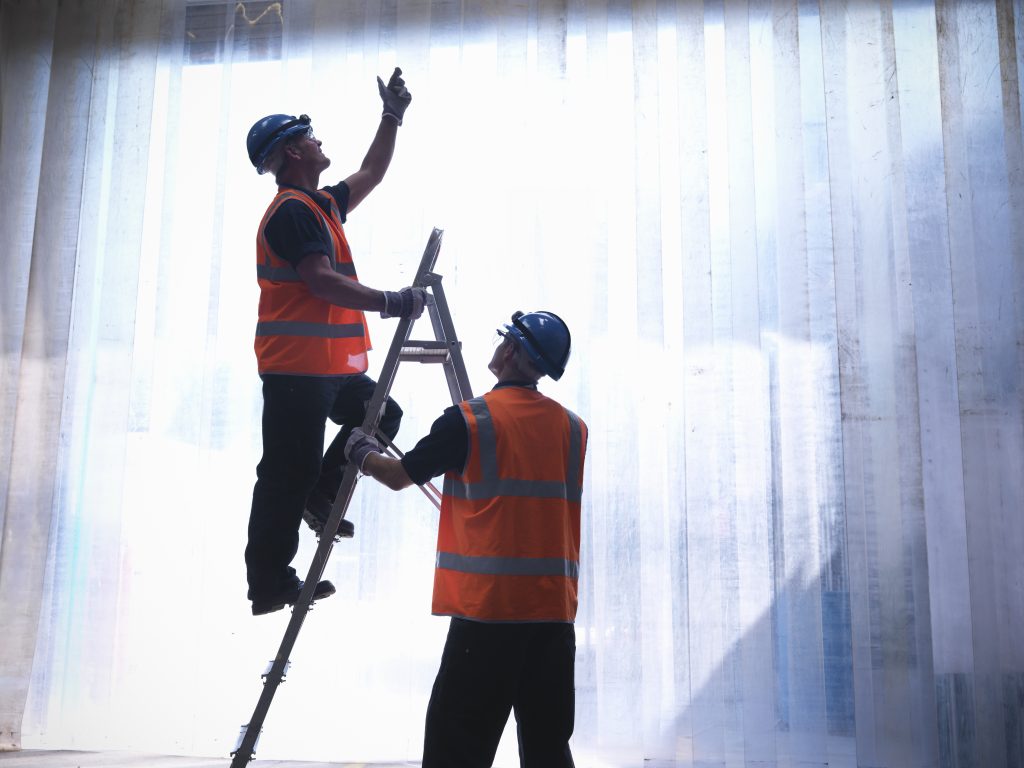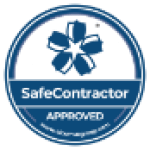5 Tips For Ensuring Safety When Working With Ladders

The biggest cause of UK workplace accidents is trips, slips and falls, including staff tumbling when working at height. Incorrect use of ladders is also a significant reason why the number of domestic DIY accidents is so high!
It is not surprising then, that the Health & Safety Executive produces guidelines for anyone who regularly uses ladders.
Here, we have summarised five of the best ‘steps’ to maintaining safety while working at height.
1. Don’t get complacent or cut corners
Particularly if you are competent and confident when using ladders, it can be tempting to start to overlook some important ladder safety protocols, for the sake of doing projects quickly.
Risk assessments are always vital and you should pause to make sure you have sufficient personnel – and the right equipment – to manage hazards in any situation that requires you to work at height.
Also, take the time to regularly reposition ladders, rather than leaning out too far to shave minutes off the project.
2. Consider when to use step, standard or combination ladders
Knowing which equipment is correct for each project is also important.
As a quick reminder, step ladders are engineered in a capital A shape, and their double-sides have a support arm. You can use them as a free-standing means of working off the ground and they offer a good-sized tread for ladder safety. However, they are generally too low for major outdoor projects.
A standard ladder needs to be leaned against a solid structure and checked for stability.
Propping a ladder against a landing wall to stretch to paint a stairwell ceiling is dangerous and unnecessary. Even a board balanced between two ladders carries risks.
This can call for combination ladders – a versatile dual-system of working safely at height, enabling you to adjust the configuration of your support equipment.
There are also times when you will need guardrails and tower scaffolds.
3. Use the best safety assured products
The rule of thumb for all such equipment is that buying a high quality, safety assured version is vital!
Even then, you need to check your ladders and accessories carefully and regularly and replace them promptly when they suffer wear and tear.
Keep in mind too, that even the best-made ladders are sometimes not enough to meet all health and safety requirements and to manage risks when working at height.
4. Find a way to keep ladders stable and correctly angled
A great example of an ingenious product to support ladder safety is the Laddermate. It is a cost-effective and versatile way to brace ladders, reducing flex or “bounce”, as well as improving sideways stability. It also prevents your ladder feet from slipping and keeps the angle of lean at the optimum level for risk management.
5. Training and reminders on safety working at height
Even the best equipment – and accessories like Laddermate – rely on staff who know how to use them correctly.
So the last tip for ensuring safety when working with ladders is to make sure your entire team is well trained and aware of ways to minimise risk. Such as choosing proper surfaces to lean ladders against, not carrying excessive weigh up ladders and checking for items that could fall from above or create an obstacle as you climb.
For more information on buying and using C&C Fabrications’ Laddermate to keep you and your team safe, don’t hesitate to get in touch.



